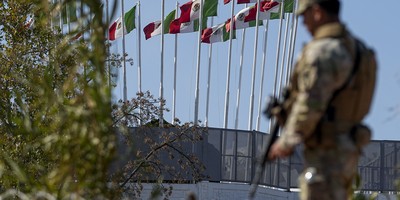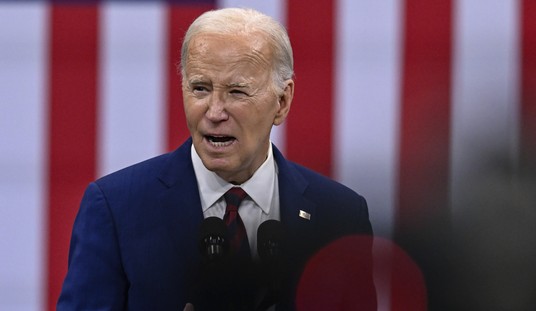*Editor's Note: This piece was co-authored by Selvaraj Kandaswamy.
The Cancun global warming and wealth redistribution summit concluded last week, with little to show for two weeks of talking in 5-star hotels and restaurants, other than vague promises that countries will try to do something meaningful about the “threat” of “dangerous” climate change.
Indian Environment and Forests Minister Jairam Ramesh nevertheless praised the summit. Rich countries will finance global warming adaptation measures in poor countries, he announced, invoking the good will of “goddesses” of Mexico to achieve some degree of public relations success. (At least they promised, again, to provide some financing … someday … from somewhere.)
Meanwhile, the Northern Hemisphere was being blasted by record cold and snow, as Old Man Winter arrived early. Britain, the United States, other countries and even Cancun were pummeled by record cold, and early snowstorms shut down highways, airports and cities.
In India, at least three people died in the northwestern states of Punjab and Haryana, when night-time temperatures dropped by three degrees Celsius below normal. Cities from Hisar to Amritsar experienced record low temperatures of 3-7 degrees Celsius (5.4-12.6 F). In central England, the BBC reported, 2010 has ushered in one of the coldest starts to winter since 1659.
Is this how rising atmospheric CO2 increases global warming? A closer look at India’s history of climate change provides still more evidence that the “dangerous manmade climate disruption” thesis is backed by very little evidence.
The cold reality is that overall average Indian temperatures have increased by only 0.4 degrees C (0.7 F) over the past century, while northwestern India and parts of south India have witnessed cooling trends. Himalayan glaciers grew to their maximum ice accumulation about 260 years ago, according to the Wadia Institute of Himalayan Geology, and their well-known retreats began as Earth warmed following the 500-year-long Little Ice Age – not because of human CO2 emissions.
Recommended
Then why on Earth did Minister Ramesh work so hard to promote CO2-induced global warming, by issuing an official report, “Climate Change and India: A sectoral and regional analysis for 2030s,” just before Cancun? Why does he prefer to believe computer-generated scenarios of extreme warming 20-30 years from now, rather than rely on his country’s past climate variations? Is there a “goddess” in his computer who can foretell our future?
Apparently, there is much still to learn from Henry Blanford (1834-1893), the Geological Survey of India’s pioneering scientist, who wrote about Indian monsoons and climate change in Nature magazine in 1891:
“[T]his warning, alas! is no mere guesswork of credulous and speculative minds, such as in these latitudes certain of our would-be weather prophets love to put forth at hazard, to furnish the topic of a day’s gossip to the millions, or happy to win for themselves a summer day’s reputation with the uninstructed, in the event of a successful [prediction]. Certainly, indeed there is not and cannot be till science shall have extended its domain far beyond its present limits.”
Even today, we are far from having predictive capabilities, and even computer-generated threats of sea level rise do not match reality.
Tide gauge data collected over the past 20 years reveal that mean sea level rise averages only 1.3 mm per year along India’s coastline. By contrast, Environment and Forests Ministry computer models projected that India’s coastal sea level might rise by three times that amount: 4mm per year or 0.4 meters (1.3 feet) per century.
Two distinguished sea level experts from the University of Durham in Britain and University of Pennsylvania, USA analyzed past sea level studies based on dating coral, marine shells, beach ridges and coastal sedimentary sequences from the Northern Indian Ocean along India’s east coast and the coast of Sri Lanka. They found at least four periods, each one lasting 1000 to 1800 years, during the mid-Holocene period (7500 to 1500 years ago), when seas were one to three meters above current levels.
Another study by Peter Ramsay of Durban, South Africa produced a 9000-year record along the southern African coastline. It shows a 2500-year-long sea level rise of up to 3.5 meters (11.6 feet) during the early to mid Holocene, before sea level fell to current levels.
This evidence suggests that the Middle Holocene was warmer than today – and that “scary” CO2-induced sea level rises projected in the ministry’s 2030 Climate report are less than natural cycles of high and low seas that our ancestors faced in India and elsewhere.
Yet another study examined coastal erosion. Scientists from the Directorate of Water Management in Orissa found that 88% of stations along India’s tropical river basins had measured reduced sediment levels for the last three decades. But this had nothing to do with CO2 emissions. The actual cause was significant diversion and storage of runoff to meet increasing water demands for agriculture and industry – and the false cure of cutting emissions would not improve this situation.
The news media and environmental organizations repeatedly tell the “uninstructed” public that current global warming is unprecedented and threatens humankind and all life on Earth. However, past temperature and sea level changes were certainly more extreme than what scientists have observed in India during the past two centuries. More importantly, even the exaggerated computer model future for India in 2030 would not be extraordinary or unprecedented, and there is no evidence that human CO2 emissions caused recent or current (natural and cyclical) temperature and sea level fluctuations.
We survived those past global warming and cooling periods. With our scientific and technological advances, we will survive future changes, too – if we do not shackle our energy and economic development, thereby keeping billions of people poor and deprived of the ability to adapt. The ministry’s November 2010 climate change report says India’s average annual temperature could increase a minimum of 1degree to a maximum of 4 degrees C (1.8 to 7.2 F) by the 2030s. We seriously doubt that these higher temperatures are based on reality, but wonder if they might save lives, like those lost during Punjab’s cold spells in December 2010.
The report also says warmer temperatures will prevail during the nighttime over the south peninsula and central and northern India, whereas daytime warming is will occur in central and northern India. However, such diurnal warming patterns might simply be related to the distance from the sea, rather than to any CO2 global warming effects.
Like Henry Blanford, we believe India, the USA and the rest of the world need more paleoclimatology and field monitoring work, before anyone makes speculative predictions based entirely on CO2-driven computer climate model “scenarios” of the future. For countries to implement restrictive, punitive energy policies – based on such speculation – would be crazy and suicidal.
Selvaraj Kandaswamy is a paleoclimatologist working at the Research Center for Environmental Changes, Academia Sinica, in Taiwan.

























Join the conversation as a VIP Member